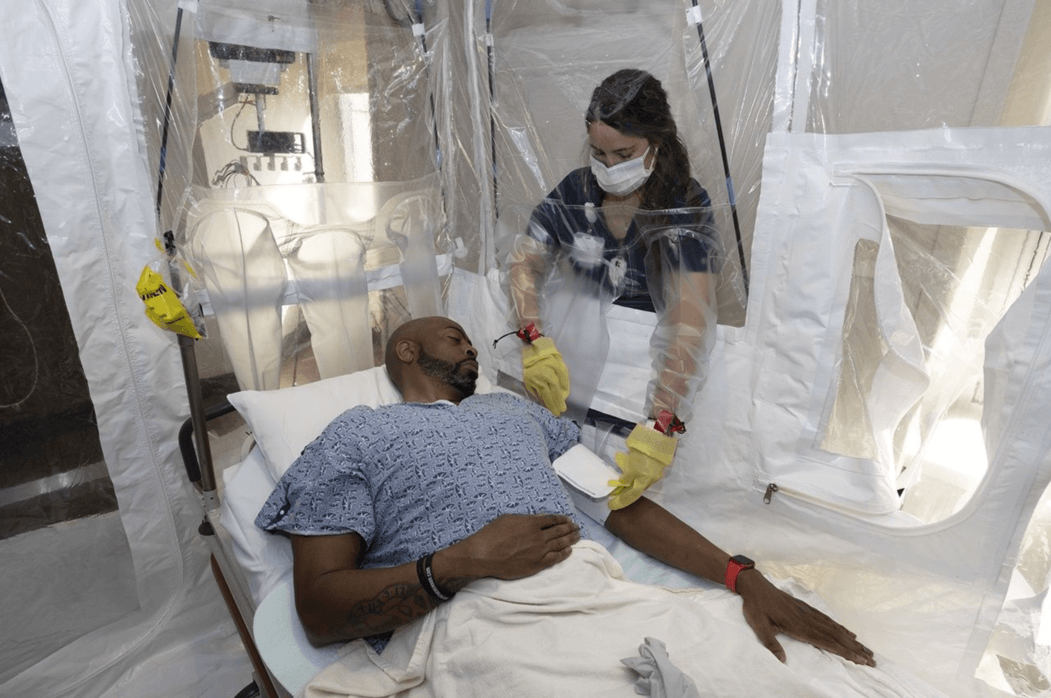How Do Hospital Isolation Rooms Save Lives And Prevent The Spread Of Diseases?

Medical professionals knew this long before the COVID-19 pandemic, but hospital isolation rooms save lives every single day. This was true before COVID, and it will be true after it, too. It’s not just for the safety of healthcare professionals that hospital isolation rooms are in use all across the world, but for the safety of the entire community.
Like the hug room created using Vinyl Technology’s industrial sewing, heat sealing, and RF Sealing, hospital isolation rooms are useful in many scenarios where a patient’s treatment requires a patient’s isolation from the rest of the population. This is common in highly communicable disease transmission conditions, like much of the world during 2020, but hospital isolation rooms were also used during the Ebola outbreaks of 2014 and 2016.
What are the different types of isolation in a hospital?
The CDC has identified seven different levels of isolation. Each level is intended to aid in the fastest, safest recovery possible. These rules have been modified over the years, but the latest guidelines cover four different levels of recommended caution:
- Standard Precautions – this level of precaution is suggested for every patient in a hospital setting, at a minimum. It includes hand washing, gloves, face shields, and masks if splashing or sprays of bodily fluids are likely, and a clean, sterile approach to all instruments and PPC used if the situation warrants. All precaution levels after Standard are considered to include the Standard Precautions, also.
- Airborne Precautions – this level of isolation is recommended for circumstances involving patients known or suspected to be infected with microorganisms transmitted by airborne droplets. This category requires each patient to be in an isolated, private room capable of 6-12 air changes per hour. These air changes are also part of the overall negative air pressure required.
- Droplet Precautions – this level is necessary for patients known or suspected to be infected with microorganisms transmitted by droplets.
- Contact Precautions – these precautions are indicated for patients known or suspected to be infected with “epidemiologically important” microorganisms, which can be transmitted through direct or indirect contact.
Why would someone be in isolation in the hospital?
If a patient has a contagious disease, the need for a hospital isolation room is clear — in order to protect the community at large from whatever virus or other microorganism is infecting the patient. But another way that isolation rooms are important is in the opposite direction–when a patient must be protected from diseases and other environmental complications. The most common reason for that would be a patient who is immunocompromised and whose comparatively more delicate immune system requires additional care and attention.
What is done in a hospital isolation room?
Any procedures done in an isolation room are essentially the same as those done outside of an isolation room, with the added necessity of sequestration away from other patients or potentially compromised individuals. It’s not so much what is done in such isolation, but the isolation itself that is important.
What is the difference between positive and negative pressure rooms?
A negative pressure room contains atmospheric pressure that is lower than the surrounding environment. This lower pressure guarantees that particles, droplets, or pathogens will not flow out of the room when the door opens. This is the ideal scenario for a hospital isolation room and one of the chief reasons for implementing one.
A positive pressure room is the opposite of this — it is a room with pressure high enough to force air from within it to flow out into the environment. This is important for immune-compromised patients who are not contagious but cannot be exposed to the same air as the rest of the hospital.
Vinyl Technology manufactures products for pressure rooms as well, such as the Chair Cushion, Pneumatic Mattress, or Pneumatic Pillow.
Why do hospital isolation rooms have glass walls?
While many hospital isolation rooms that are permanently installed are glass, providing a direct view of an isolated patient for medical monitoring, it is often much easier and cost-effective to use an industrially-sewn isolation chamber made of fabric, PVC, or other textile material. These can be erected whenever they’re needed and stored in a small area between implementations. This kind of flexibility is only possible with industrial sewing.
For more information about how Vinyl Technology can help you create the perfect hospital isolation room, or other sewn medical products, for your organization, get in touch with us today.

